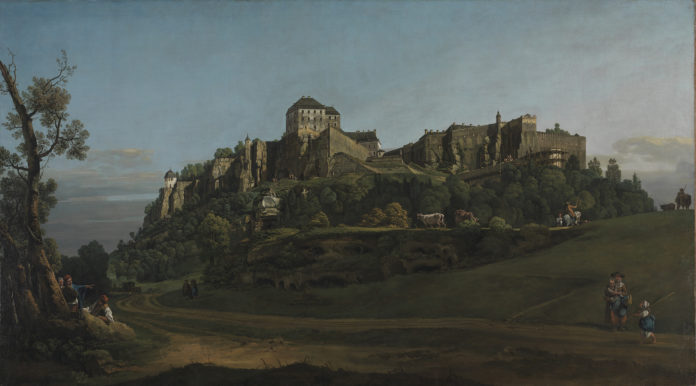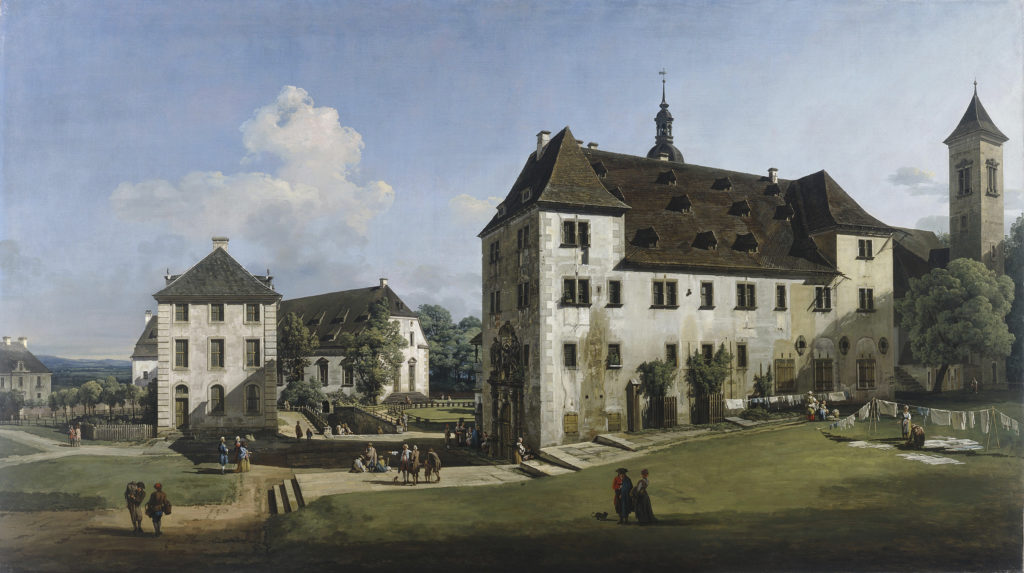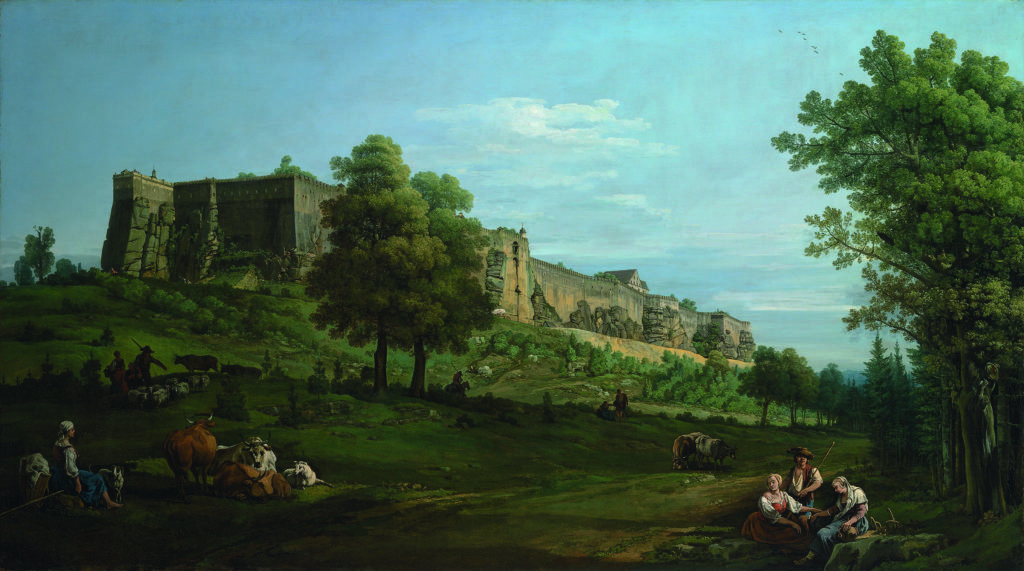
Through October 31, 2021, the National Gallery (London) will reunite five views of the fortress of Königstein for the first time in 250 years. These were painted by Bernardo Bellotto (1722–1780) at the peak of his career, when he was court painter in Dresden.
Once overlooked in favour of his more famous uncle and master Canaletto, with whom he trained in Venice, Bellotto is today recognised as one of the most distinctive artistic personalities of his age. This Room 1 exhibition will shine a spotlight on the National Gallery’s 2017 acquisition, “The Fortress of Königstein from the North” (1756-8) – the first 18th-century German view to enter the Collection.
August III (1696–1763), Elector of Saxony and King of Poland, commissioned these five paintings in about 1756 as part of a larger series of thirty views of Dresden and its surroundings. Bellotto received payment for the pictures in 1758 and, although completed, they were almost certainly never delivered to the elector due to the escalation of the Seven Years’ War. All five views were probably imported into Britain during Bellotto’s own lifetime and, until 1991, were to be found in three different British collections.
Today, “The Fortress of Königstein from the South” is in The Derby Collection, Knowsley Hall, Merseyside (the collection from which the National Gallery’s own view of the fortress also came), “Fortress of Königstein from the North-West” is in The National Gallery of Art, Washington D.C, and both “The Fortress of Königstein: Courtyard with the Brunnenhaus” and “The Fortress of Königstein: Courtyard with the Magdalenenburg” are in Manchester Art Gallery.




The fortress of Königstein, which is situated approximately 25 miles south-east of Dresden, appears largely unchanged from Bellotto’s own time. The five paintings – each of them 2 ½ metres wide – show the ancient fortress from outside its walls as well as from within. Bellotto succeeds in capturing both the drama and detail of this commanding site. Stand back and you can see the sharp, angular forms of the fortress but look closely and you can make out the crumbling stone walls, tiny soldiers on the ramparts and women hanging washing in the courtyard.
Applying what he had learnt in Venice to highly original panoramic depictions of northern Europe, Bellotto took the tradition of view painting in an entirely new direction. The works all demonstrate his outstanding technique and innovative approach to painting views, including the use of a camera obscura – the precursor of modern cameras – that helped Bellotto plan his compositions in minute detail.
Visitors to this Room 1 exhibition will be encouraged to take part in a dynamic viewing experience of the five paintings, moving from one monumental view to the next, as if moving around the site of the fortress itself, and will be able to appreciate the contrast between the fortress’s forbidding walls and the pastoral calm of its surroundings, with the hustle and bustle of everyday life on the inside, as seen in the courtyard views.
The exhibition is curated by Letizia Treves, the National Gallery James and Sarah Sassoon Curator of Later Italian, Spanish, and French 17th-century Paintings. She says: “In 2017 the National Gallery was finally able to acquire a painting that shows Bellotto’s exceptional skill and originality as a view painter. Since then, I have dreamt of reuniting his five views of the fortress of Königstein which, in their magnificence and grand scale, rightfully point to Bellotto being among the greatest view painters of his age.”
After London, a version of the exhibition will travel to Manchester Art Gallery, November 20, 2021 – February 27, 2022.
> Visit EricRhoads.com to learn about more opportunities for artists and art collectors, including retreats, international art trips, art conventions, and more.
> Sign up to receive Fine Art Today, our free weekly e-newsletter
> Subscribe to Fine Art Connoisseur magazine, so you never miss an issue







